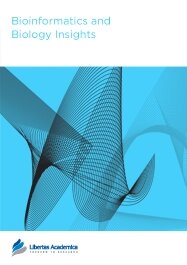

Publication Date: 30 Aug 2010
Type: Original Research
Journal: Bioinformatics and Biology Insights
Citation: Bioinformatics and Biology Insights 2010:4 61-83
doi: 10.4137/BBI.S5087

Background: Cytoplasmic polyadenylation element binding proteins (Cpebs) are a family of proteins that bind to defined groups of mRNAs and regulate their translation. While Cpebs were originally identified as important features of oocyte maturation, recent interest is due to their prospective roles in neural system plasticity.
Results: In this study we made use of bioinformatic tools and methods including NCBI Blast, UCSC Blat, and Invitrogen Vector NTI to comprehensively analyze all known isoforms of four mouse Cpeb paralogs extracted from the national UniGene, UniProt, and NCBI protein databases. We identified multiple alternative splicing variants for each Cpeb. Regions of commonality and distinctiveness were evident when comparing Cpeb2, 3, and 4. In addition, we performed cross-ortholog comparisons among multiple species. The exon patterns were generally conserved across vertebrates. Mouse and human isoforms were compared in greater detail as they are the most represented in the current databases. The homologous and distinct regions are strictly conserved in mouse Cpeb and human CPEB proteins. Novel variants were proposed based on cross-ortholog comparisons and validated using biological methods. The functions of the alternatively spliced regions were predicted using the Eukaryotic Linear Motif resource.
Conclusions: Together, the large number of transcripts and proteins indicate the presence of a hitherto unappreciated complexity in the regulation and functions of Cpebs. The evolutionary retention of variable regions as described here is most likely an indication of their functional significance.
PDF (988.20 KB PDF FORMAT)
RIS citation (ENDNOTE, REFERENCE MANAGER, PROCITE, REFWORKS)
BibTex citation (BIBDESK, LATEX)
XML
PMC HTML
Bioinformatics and Biology Insights helps to reach all people with the latest results on research which directly helps them and with their needs. Three of our co-authors are from Burkina Faso, the malaria holoendemic region our research is based on, and serving as motivation for all our efforts for better treatment of malaria. It is good to be social and it is good to promote science world-wide through open access.

All authors are surveyed after their articles are published. Authors are asked to rate their experience in a variety of areas, and their responses help us to monitor our performance. Presented here are their responses in some key areas. No 'poor' or 'very poor' responses were received; these are represented in the 'other' category.See Our Results
Copyright © 2013 Libertas Academica Ltd (except open access articles and accompanying metadata and supplementary files.)
Facebook Google+ Twitter
Pinterest Tumblr YouTube